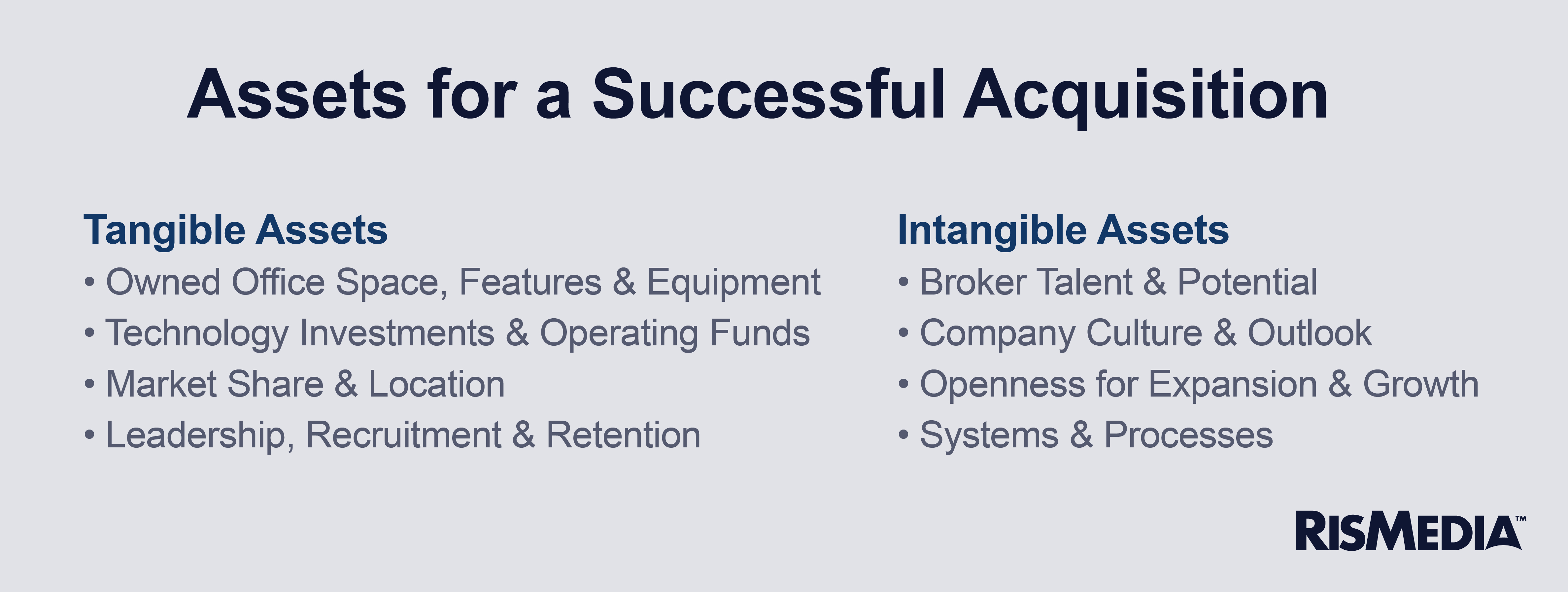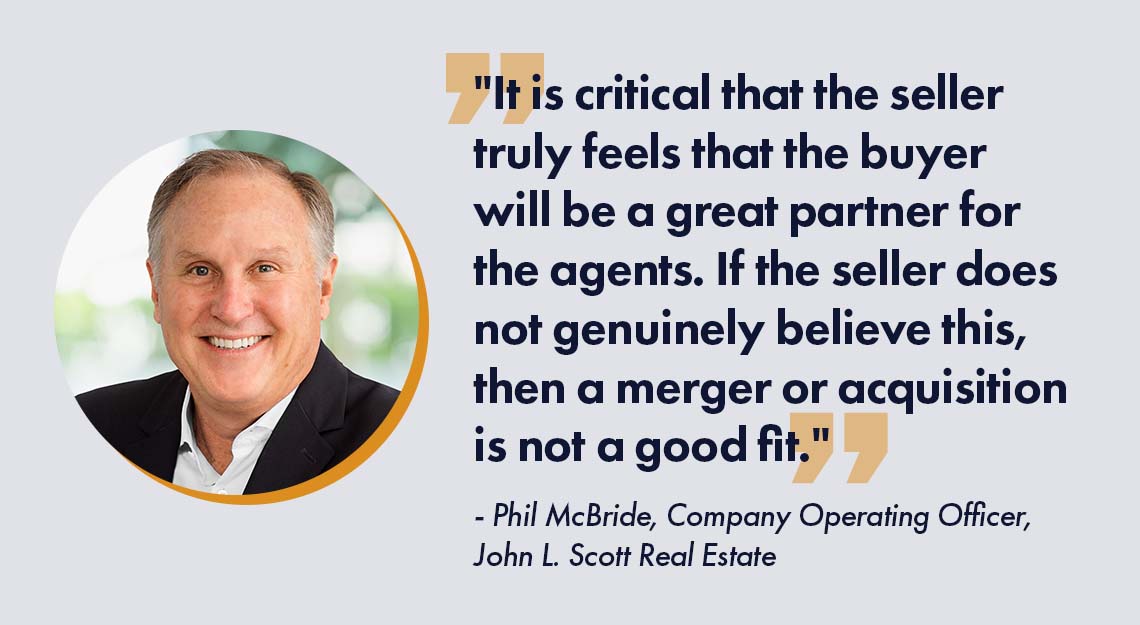From talent to technology, there are a number of important tangible and intangible assets and attributes a broker/owner should consider when exploring an acquisition.
McBride feels that the most important tangible assets include things like a brokerage’s owned office space or office features/equipment, technology investments and operating funds.
“Intangible assets we consider critical when exploring an acquisition are things like broker talent and potential, company culture and outlook, and an openness for expansion and growth by a brokerage’s agents and support staff,” he says. “Other factors to consider are the likely reactions of the key leaders of the company. Oftentimes, the influencers are not only the owners, and you may be surprised to find out who they are. You should observe the office dynamics closely during your diligence period to identify these key office influencers.”
That’s why an important necessity of a successful merger or acquisition is to prepare a gap analysis from an agent’s perspective. Determine what tools agents rely on at their current firm and how your tools match up. To keep agents happy, the acquisitive company may need to bring over technology or resources from the company it is buying.
 For William Raveis Realty, it’s not the technology aspect that draws them to a company, but the “kickers”—something unique to the company that agents couldn’t get otherwise.
For William Raveis Realty, it’s not the technology aspect that draws them to a company, but the “kickers”—something unique to the company that agents couldn’t get otherwise.
“Do they own a certain share of the market, are they in a special neighborhood, are they special people, are they connected to certain people or places,” Raveis offers as examples. “Our business is all about people and relationships, so that’s what we are looking at.”
John L. Scott Real Estate’s mantra is “do no harm to the agent’s business,” because any oversight during an acquisition could impact an agent’s livelihood. Thus, the company pays very close attention to their needs during a period of transition.
“It is critical that the seller truly feels that the buyer will be a great partner for the agents. If the seller does not genuinely believe this, then a merger or acquisition is not a good fit,” McBride says. “For instance, in a recent acquisition I led, our initial interest in the company was born out of a desire to hire the owner for a critical position. The acquisition of the company was a secondary item for both the buyer and the seller, with the primary focus on the buyer’s need for talent and the seller’s desire for career growth.”
Golden admits that it’s tough to come up with a definitive list of items he looks for when considering companies to purchase because each acquisition is a bit different. With that in mind, he generally looks at the brokerage’s processes and leadership.
“If they have built-in processes that work well, then there can be value to that, especially if they’ve created a system and an infrastructure that you don’t have to replicate,” he says. “We also look at leadership—are they dynamic and do they bring different skills to the table? Finally, a cultural fit is key.”

Hanna believes that the most tangible asset in any company is leadership, and in turn, attracting, retaining and enhancing a management team and employees who want to be part of a growth-oriented organization. Examining the leadership team and what they have done provides a good indicator of what’s to come and can eliminate churn and maximize efficiencies.



